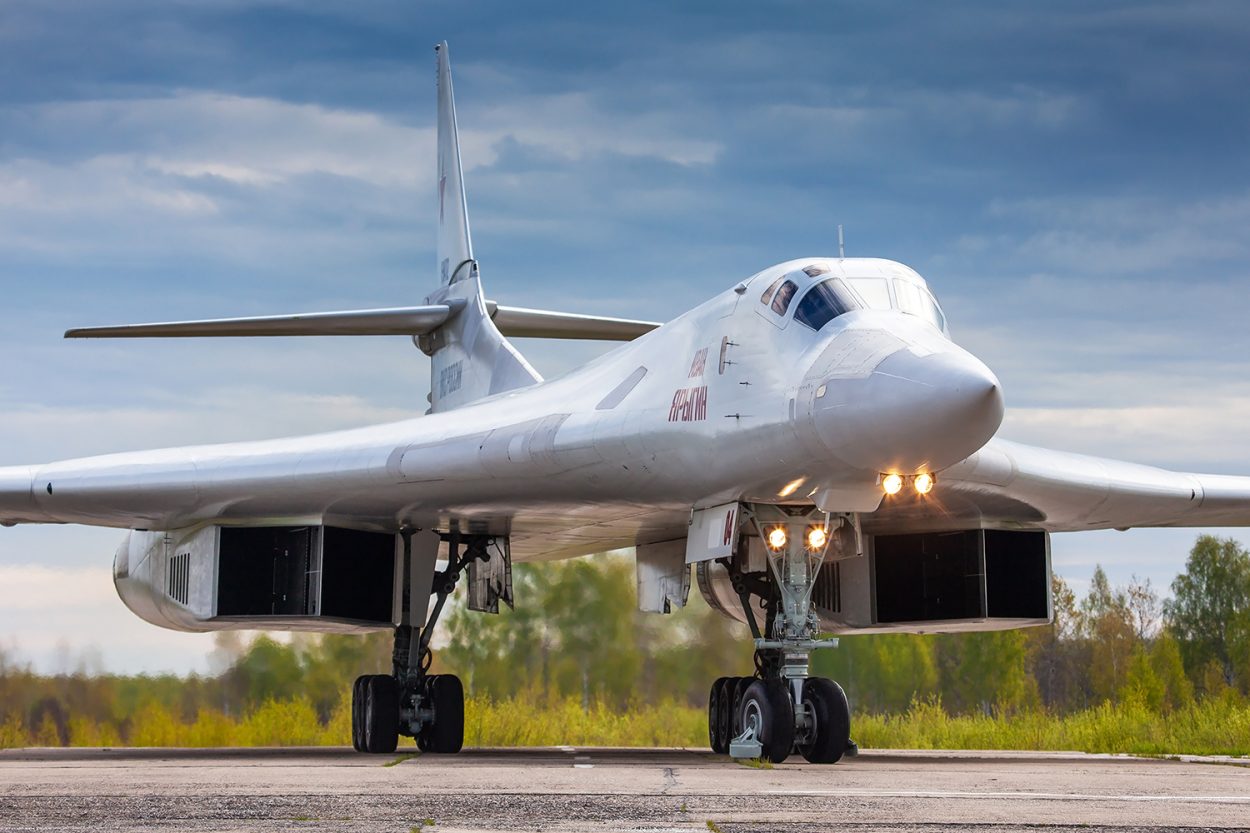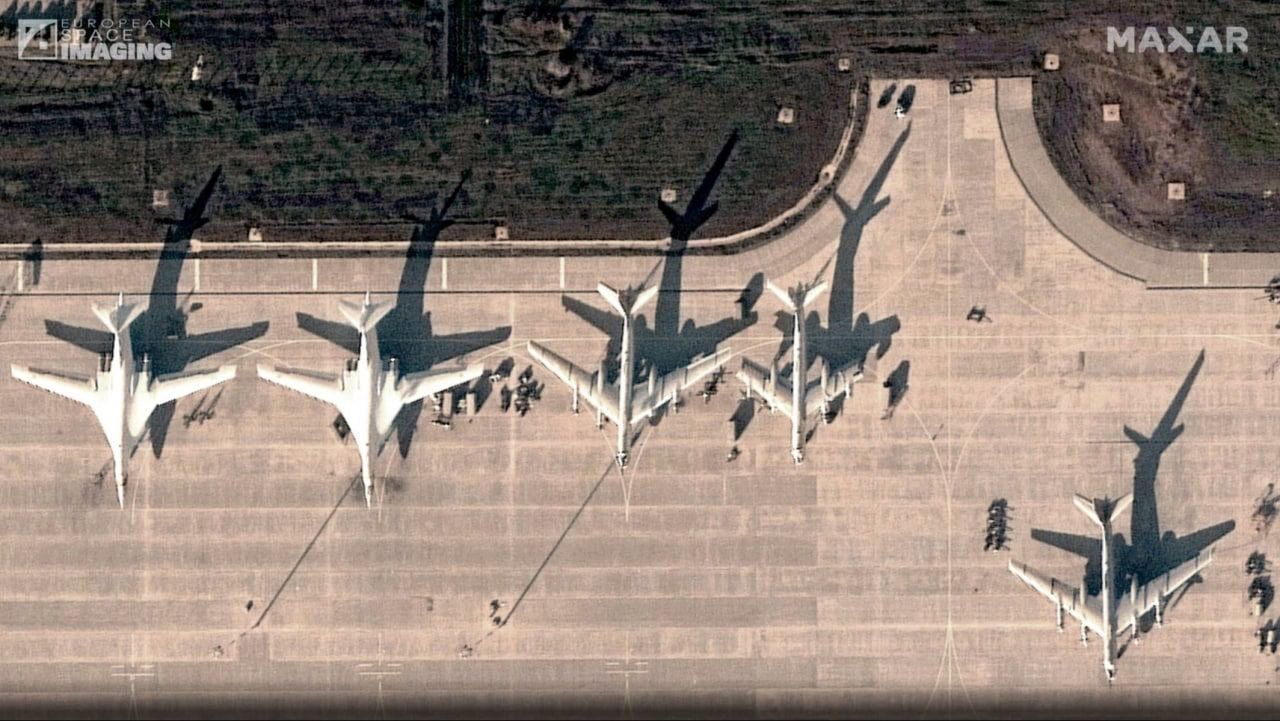Satellite image experts have observed that Russia has painted a few of its Tupolev Tu-95MS and Tu-160M Blackjack/White Swan strategic bombers, indicating an effort to camouflage them from Ukrainian drone and missile attacks. This is at the Engels Air Force base, 800 kilometers southeast of Moscow.
Chinese JF-17 “Shot Down” By 2nd-Hand F-16 Fighter Jet; US Establishes ‘Air Supremacy’ In Argentina
Interestingly, such attempts emerged last year as well, when satellite pictures revealed Russia had placed rubber “tires” on its bombers to provide added protection from UAV strikes while also painting “silhouettes,” possibly as decoys.
Engels base is also the same military air station, along with the Dyagilevo base that saw Ukraine conducting strikes using modified Soviet-era Strizh-141 high-speed reconnaissance drones for land strikes on December 2.
Three persons were killed in the first attack. This was followed by another Strizh-141 attack at Engels on December 26, when Russia claimed to have shot down the drone.
Tu-95MS and Tu-160 are the mainstay of Russia’s long-range stand-off aerial strikes into Ukrainian cities, attacking military and civilian-military targets using missiles like Kh-101. Ukraine has often tried targeting the bombers, and Russia particularly expects its far western bases close to Ukraine to be under a permanent threat.
While Dyagilevo, in the Ryazan region, is 458 km from Ukrainian territory, Engels, in the Saratov region, is 506 km from the border.

New Satellite Images
A satellite image posted by Platform X user MT Anderson of the Engels-2 air base shows one Ilyushin Il-76, four Tu-160s, and nine Tu-95s. Color-coded boxes claim one Tu-160 and four Tu-95 are “painted.” It is not clear if this is the only aircraft inventory at Engels or if other planes are in the hangar, away from the airside.
Engels-2 stands as one of Russia’s crucial airbases, serving as the home base for the 121st and 184th Heavy Bomber Aviation Regiments.
🇷🇺ENGELS-2 AIR BASE🇷🇺
0.5M📷 from 20 March 2024 (08:14 UTC). No apparent signs of the reported drone activity. A few observations:
Tu-95s appear to be the only aircraft ready
Tu-160s covered with tires(?) or in maintenance(?)
As the snow recedes, painted aircraft are now visible pic.twitter.com/JKT5uajejC— MT Anderson (@MT_Anderson) March 21, 2024
Three of the Tu-160s are observed to have “tires” on their spine atop the aircraft’s fuselage. The “painted” Tu-160 and the Tu-95, meanwhile, appear to have a scheme that is darker and almost merges with the ground, with the contours barely visible.
This “painted aircraft (become) visible…as the snow recedes,” Anderson points out.
Decoys or Added Protection?
On September 3 last year, satellite images showed Russia placing surplus car tires on the wings and fuselage. At the time, experts said the tires could be expected to bounce off attacking UAVs before they could hit the plane’s airframe. Even a single hit with a low-explosive warhead is enough to put an aircraft out of operation for a long time.
The thinking behind the “paint,” meanwhile, is to make the aircraft hard to spot on optical cameras. The paints could also be decoy aircraft or silhouettes to force an attacker to strike a false target.
Such deceptions, though not always successful, are also expected to complicate an adversary’s planning, injecting a sense of doubt as to whether the targets identified are fake or real.

Russia is aware Ukraine depends heavily on Western military supplies, electronic intelligence (ELINT), optical reconnaissance, and assistance from NATO advisors on the ground.
This implies a lot of resources and man-hours go into planning and conducting attacks, and neither Ukraine nor NATO would want to expend scarce resources while conducting risky strikes deep into Russian territory.
Another remote expectation on the part of Russian planners could be to actually draw out Ukrainian attacks and possibly gain further insight into its planning and NATO’s surveillance tactics. The above conclusions, however, remain in the broad realm of speculation until further light is shed by Russian military experts.
- The author can be reached at satamp@gmail.com
- Follow EurAsian Times on Google News




